Views: 316
 End of Stiklų St. on the intersection with Dominikonų St. and Šv. Ignoto St. in the Old Town in Vilnius
End of Stiklų St. on the intersection with Dominikonų St. and Šv. Ignoto St. in the Old Town in Vilnius
 In Stiklų St. No. 4 stands a typical building with a so-called Courtyard of the Printing House. Its history goes back to the 15th century. In the 16th century it held the Mamonichi printing house. A Gothic building in the courtyard with the exterior and fragments of the interior was reconstructed in 1974. In front of it a sculpture of “The Chronicler” is erected in 1973
In Stiklų St. No. 4 stands a typical building with a so-called Courtyard of the Printing House. Its history goes back to the 15th century. In the 16th century it held the Mamonichi printing house. A Gothic building in the courtyard with the exterior and fragments of the interior was reconstructed in 1974. In front of it a sculpture of “The Chronicler” is erected in 1973
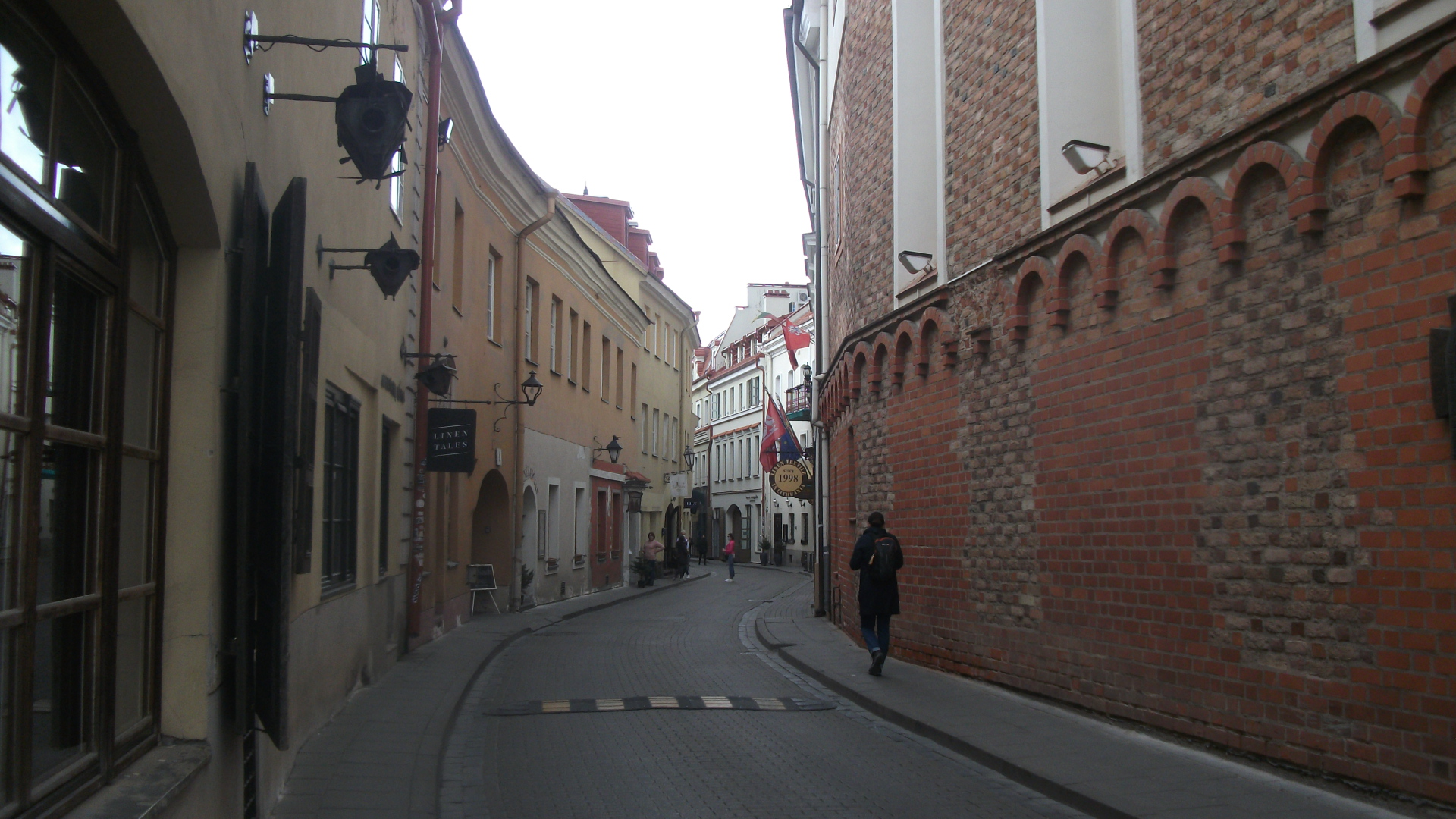 Wall (right) of the former Russian Orthodox church in Stiklų St. No. 17
Wall (right) of the former Russian Orthodox church in Stiklų St. No. 17
All photos are copyrighted by Vladislav B. Sotirovic
© Vladislav B. Sotirovic 2020
RELATED POSTS

Monument to the Gaon of Vilnius Elijah ben Solomon Zalman (1720-1797) called "Jewish Saga". The monument is located on the place where he lived. The house was destroyed during WWII and it was not restored. Nearby the monument there is a memorial plaque in Lithuanian and Hebrew on a building at Žydų (Jewish) Street Antokolski Street in Vilnius Old Town's Jewish Quarter. In this street the famous 19th century sculptor Mark Antokolski lived in 1843-1862. It was here he created his first sculptors depicting the inhabitants of his native quarter, which later gained recognitionMėsinių Street in Vilnius Old Town. That was one of the longest and most important street in the Jewish QuarterAll photos are copyrighted by Vladislav B. Sotirovic© Vladislav B. Sotirovic 2019
Continue Reading
Trakų St. finishes where it meets Pylimo St, which runs along the course of the old city wall. There used to be a gate here, which was pulled down together with the wall at the very beginning of the 19th century. In the niche of the Umiastowski estate (Trakų St. 2) there is a Statue of "The City Guard" (1973) In Trakų Street, there is the Church of Our Lady of the Assumption that was founded here by the noble Goštautas family in 1387, the same year as Lithuania became converted to Christianity. However, it is believed that the church with the monastery existed even earlierOne of courtyards of the buildings in Trakų StreetAll photos are copyrighted by Vladislav B. Sotirovic© Vladislav B. Sotirovic 2020
Continue Reading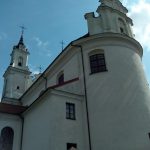
In 1695 the Trinitarians set up a community on the right bank of the River Neris just to the north of Vilnius. Therefore, the place is known as Trinapolis (a city of the Trinitarians)In 1750-1760 Trinapolis was reconstructed in the late Baroque style. It was a summer residence of Vilnius bishopsIn Soviet times the church was closed down. Today, the monastery is used as a retreat house by an order of nuns, and the church is not regularly openAll photos are copyrighted by Vladislav B. Sotirovic© Vladislav B. Sotirovic 2022
Continue Reading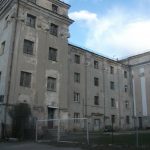
The building was noted for its stately late Baroque appearance. Michelangelo Palloni and Pietro Perti are thought to be the authors of the decorationsNoteworthy is an interesting Baroque pediment with a stucco bas-reliefA courtyard of the estate. Today, the buildings belongs to the Lithuanian Academy of Music and TheatreAll photos are copyrighted by Vladislav B. Sotirovic© Vladislav B. Sotirovic 2020
Continue Reading
At the egde of Vingio Park, stands a Classical chapel built by Governor Nikolai Repnin for his wife in 1799-1800Behind the chapel, one can find the restored graves of the German, Russian, Polish, Turkish and Austro-Hungarian soldiers killed in both world wars A monument to the soldiers of the Central Powers killed in WWI in Vingio ParkAll photos are copyrighted by Vladislav B. Sotirovic© Vladislav B. Sotirovic 2020
Continue Reading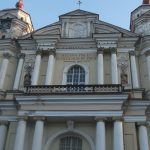
The founder of the church was a Grand Hetman and Vilnius Voivode of the Grand Duchy of Lithuania. The 17th-century church's façade is modest, however the interior is richly ornate with a number of stucco mouldings The church was built to mark the liberation of Vilnius from Moscow (The 1655-1661 War) and the founder's own escape from the hands of rebellious soldiers. The interior was created by the Italians G. P. Perti and G. M. Galli, who decorated it with more than 2,000 stucco mouldings The chandelier was created in 1905 in Riga and represents the Biblical Noah's arkAll photos are copyrighted by Vladislav B. Sotirovic© Vladislav B. Sotirovic 2018
Continue Reading
In 1780, Vilnius Bishop Ignacy Massalski settled in Verkiai. He commissioned Lithuanian architect Laurynas Gucevičius to reconstruct an earlier palace. The general plan and maintenance buildings were designed by Lithuanian architect Martin KnackfussThe ensemble encompasses the park of 36 ha. Situated on two terraces, the park consisted of two parts - the upper and the great park. A view of Vilnius and the Neris River is exposed from a steep slopeSince 1960 the ensemble belongs to the Lithuanian Academy of Science and is gradually renovatedAll photos are copyrighted by Vladislav B. Sotirovic© Vladislav B. Sotirovic 2021
Continue Reading
Town Hall Square has been a market place since very early times, and it today dominated by the Town Hall which was formerly a court, with the basement being used as prison cellsThe Town Hall back-side. The present building was constructed between 1785 and 1799 by the Classical architect Lithuanian Laurynas Stuoka-Gucevičius The square in front of the Town Hall is the venue for an annual three-day crafts market on the weekend closest to March 4th, St. Casimir's DayAll photos are copyrighted by Vladislav B. Sotirovic© Vladislav B. Sotirovic 2020
Continue Reading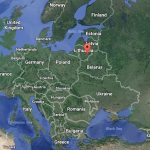
A geographical centre of Europe - 25 km far from Vilnius. From 2015 Summer You will get a special Certificate that you have visited the Geographical center of Europe. Don't miss the chance to get it for freeThe Baltic States of Europe - Estonia, Latvia & LithuaniaVytis (The Knight) - The Coat of Arm of both historical Grand Duchy of Lithuania and present-day the Republic of LithuaniaOrigins of images: Facebook, Twitter, Wikimedia, Wikipedia, Flickr, Google, Imageinjection & Pinterest.Read our Disclaimer/Legal Statement!Donate to Support UsWe would like to ask you to consider a small donation to help our team keep working.
Continue Reading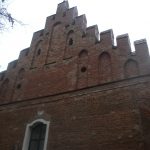
The church was named after St. Nicholas, who was the Bishop of Myra and the patron of travelers and merchants. The character of Santa Claus is thought to be based on this saintThe Church of St. Nicholas in Vilnius is the oldest surviving Late Gothic church in Lithuania. The small church was used by the Franciscan monks, who lived nearbyThe interior of the church is decorated with ornate rib and groin vaults. A 16th-century picture of St. Nicholas with a silver frame is located on the left altarAll photos are copyrighted by Vladislav B. Sotirovic© Vladislav B. Sotirovic 2018
Continue Reading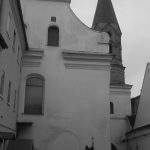
This is the first Evangelical Lutheran Church (Kirche) built-in Vilnius in 1555 on the initiative of the Chancellor of the Grand Duchy of Lithuania Nicholas Radziwiłł the Black. In front of the church, there is a monument erected to Martin Luther The church was rebuilt in 1662 and substantially reconstructed in 1738-1744. In 1944 it was closed down. In 1993 it was returned to the parishioners and renovatedThe church has a single nave and an original pentagonal shape. Its magnificent high altar was designed by German Protestant architect Jan (Johan) Krzysztof GlaubitzAll photos are copyrighted by Vladislav B. Sotirovic© Vladislav B. Sotirovic 2019
Continue Reading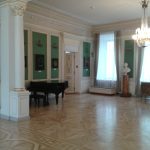
The family of the noblemen Chodkiewicz bought a house that stood on this site, and transformed it into a Renaissance residenceGrand Hall of the Vilnius Picture Gallery in former Chodkiewicz PalaceThe Classicist interior of the palace is a notable feature of the building of former Chodkiewicz Palace, today the Vilnius Picture GalleryAll photos are copyrighted by Vladislav B. Sotirovic© Vladislav B. Sotirovic 2020
Continue Reading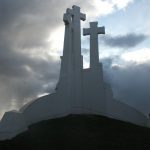
Three crosses are believed to have first been erected on this hill above the Old Town of Vilnius in the 17th century to commemorate a group of 14 Franciscan monks from a nearby monastery who were martyred in the 14th century The monument has changed several times. The present one was built in 1989 to replace one that had been removed by the Soviet authorities in the 1950sOne of the best panoramic views of the Old Town of Vilnius is offered from the Hill of Three CrossesAll photos are copyrighted by Vladislav B. Sotirovic© Vladislav B. Sotirovic 2020
Continue Reading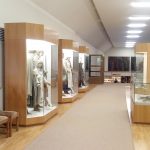
The museum is located in the north wing of the Old Arsenal and looks at Neolithic, Bronze and Iron Age Lithuania followed by the various tribes that inhabited the area until they combined to form a state in the 13th centuryThe museum displays object found in burial sites, such as pins, amulets, rings, brooches, knives or necklaces. You can as well as see regional dressses of Lithuanian tribes before the formation of the state in the mid-13th century The museum shows a hoard of some 16.000 17th-century coins found in 1999 in Vilnius. It is believed that the hoard may have been hidden during the 1700-1721 Great Northen War. Nevertheless, it is the largest collection of old coins to be found in Lithuania All photos are copyrighted by Vladislav B. Sotirovic© Vladislav B. Sotirovic 2020
Continue Reading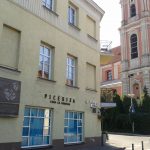
Monument in Remembrance of Vilnius Ghetto Martyrs and Fighters in 1941-1943. The Large Vilnius Jewish Ghetto was liquidated on September 23, 1943, and the Jews who couold work were moved to concentration and labor campsFormer Vilnius Ghetto Theatre. Jewish institutions, which included the theatre, did not stop operating in the ghetto during WWII. A theatre was in operation in the Large Ghetto in 1942-1943 The Ghetto Library's building, now under the reconstruction. At the time of ghetto, the name of the street was Strashun Street in which the library was locatedAll photos are copyrighted by Vladislav B. Sotirovic© Vladislav B. Sotirovic 2019
Continue Reading
The Town Hall hosted a court, archive, weapons depository, as well as a prison for artisans that had broken the law. Burgomasters also held meetings in the Town Hall, as did the Council of Merchants Since 1991, Vilnius Old Town Hall once again is functioning as a place for holding important events like art exhibitions, concerts, conferences, meetings, etcIn the Middle Ages, the Town Hall Square was a place where physical punishment was carried out. There were gallows and a scaffold nearby, where executions were carried outAll photos are copyrighted by Vladislav B. Sotirovic© Vladislav B. Sotirovic 2019
Continue Reading
One of the focal touristic attractions in the Žvėrynas district of Vilnius is the traditional type of the wooden houses coloured in different coloursŽvėrynas means "menagerie" or "beastland". In the 19th century a forest grew in this areaSince 1893, the process of urbanization of the district of Žvėrynas started with the building of wooden and brick villas and summerhouses. Today, this district of Vilnius is a prestigiuos residential part of the capitalAll photos are copyrighted by Vladislav B. Sotirovic© Vladislav B. Sotirovic 2020
Continue Reading
After being baptized in 1251 into the Roman Catholicism in 1251, Grand Duke Mindaugas built the first cathedral in Vilnius on the site of the present-day Cathedral Basilica (Cathedral of St. Stanislaus and St. Vladislaus). Before that, in pagan times an altar, a sacred fire or even a Perkūnas sanctuary was located on the site of today's Cathedral Basilica The creation of the Lithuanian state started as late as the 13th century. Its first outstanding ruler Mindaugas was baptized in 1251 and crowned King of Lithuania on July 6th, 1253. Today, July 6th is a national holiday of Lithuanian statehood It is assumed that it was Mindaugas who built the first Cathedral in Vilnius. Traces of the original Cathedral incorporating Romanesque style features have been discovered in the vaults of the present Cathedral. After Mindaugas's death, the Christian (Roman Catholic) Cathedral was turned into a place of pagan worship. The author ...
Continue Reading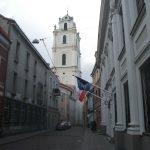
In this street, it was used to be a market place where it meets Pilies street. The first Town Hall is also believed to have stood on this spot Pharmacy house in St. John St. No. 5. Georg Schulz's pharmacy operated in this house since 1639. During the war in 1655, the house was burned down. In 1781, pharmacist Koszyk acquired the ruined building and reconstructed it The Pac estate. Since 1628, the building belonged to the Pac magnate family of the Grand Duchy of Lithuania. In 1783, the dilapidated building was bought, renovated and decorated by the Chancellor of the Grand Duchy of Lithuania - Alexander Michael Sapieha. Currently, the building belongs to the Polish Embassy All photos are copyrighted by Vladislav B. Sotirovic© Vladislav B. Sotirovic 2020
Continue Reading
It is one of the most attractive Russian Orthodox churches in Vilnius: the exterior is a profusion of shining onion-shape domes; but the interior is remarkably serene. The interior's simplicity is interupted only by an elaborate iconostasis The internal space is created by two huge pairs of parallel semi-circular arches, intersecting at the top under the central dome which is also the main source of lightA panel on the right of the iconostatis depicts the two saints, both from noble families in the Middle Ages, to whom the church is dedicatedAll photos are copyrighted by Vladislav B. Sotirovic© Vladislav B. Sotirovic 2020
Continue ReadingJewish Quarter (II)
Trakų Street in Vilnius
The Church of the Holy Trinity and Trinapolis in Vilnius
Słuszki Estate in Vilnius
Vingio Park in Vilnius
Church of St. Peter and St. Paul in Vilnius
The Ensemble of the Verkiai Estate
Around Town Hall Square in Vilnius
Lithuania – Geographical Center of Europe
Church of St. Nicholas
Evangelical Lutheran Church
The Vilnius Picture Gallery (Chodkiewicz Palace)
The Hill of Three Crosses
The Museum of Archaeology of Lithuania
The Large Vilnius Jewish Ghetto
Vilnius Old Town Hall
Traditional Wooden Houses in Žvėrynas
King Mindaugas Monument
St. John Steet in Vilnius
The Russian Orthodox Church of St. Michael and St. Constantine



